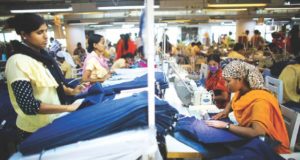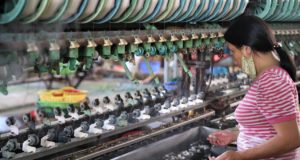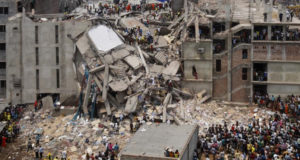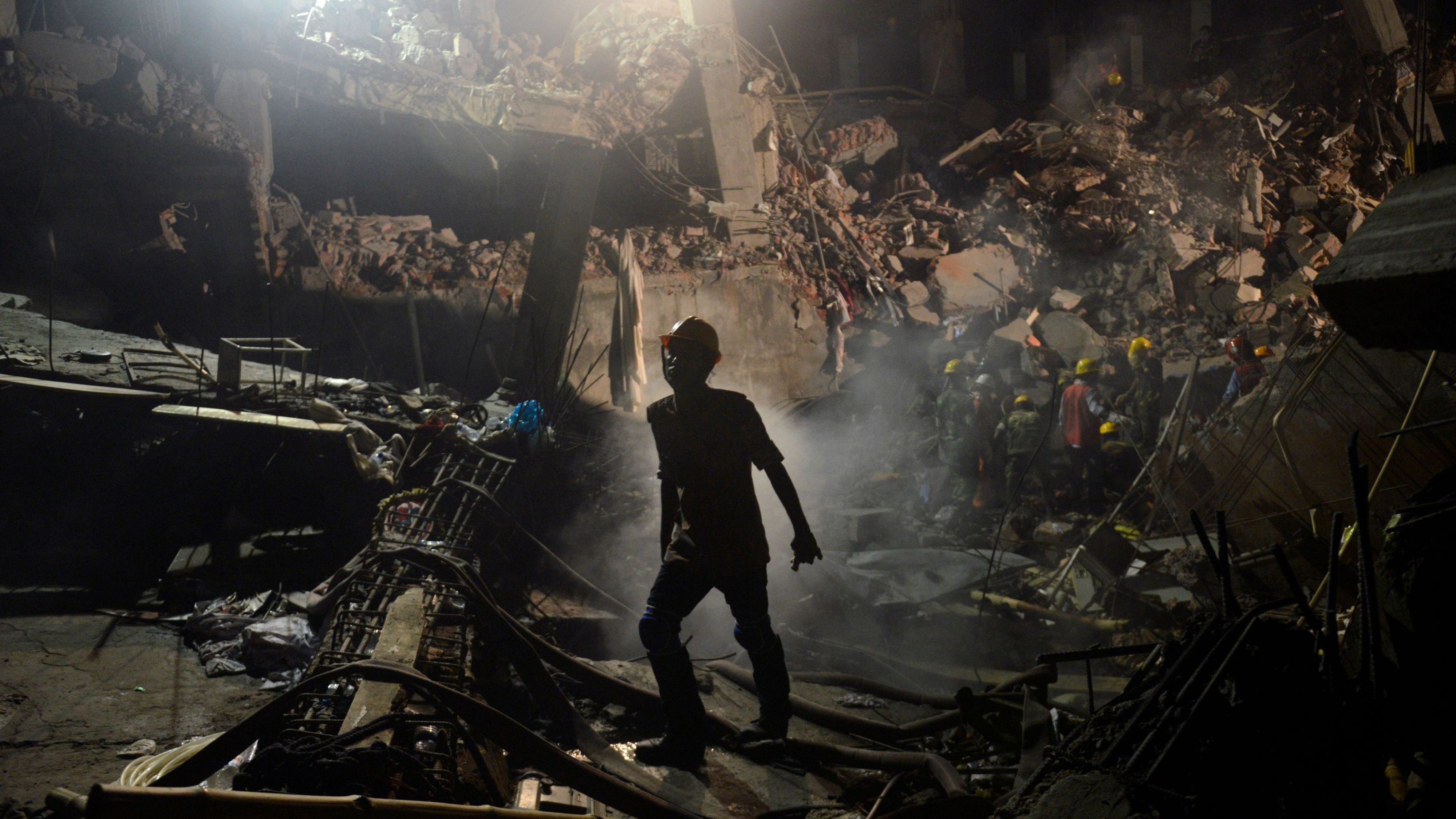Published in The Daily Star on Monday, 24 April 2017
It has been four years since the day in April when the nation and the world was shocked when a garment factory building in Savar came crashing down. 1,129 workers were killed and thousands more injured, trapped in the rubble. Not the first time but definitely the largest incident of accidental structural failure that brought to the limelight the issues of building safety, workers’ rights and the problems in the global supply chain. Four years down the line, where do we stand?
The Daily Star talks to Dr. Khondaker Golam Moazzem, Research Director, Centre for Policy Dialogue (CPD) about the progress Bangladesh has made and the challenges it still faces.
Compensation
What we have seen is, the immediate issues, particularly the ones involving the victims – supports, training, compensation, treatment – had been, from the context of Bangladesh, substantially achieved. But a few challenges remain: some of the immediate issues had short-term and medium-term effects. For example, it was said that the compensation would be determined based on the extent of the injury. But it was not adequate because of the process of calculation and the nature of the problems. They did not get the money in one go; so they had no capital to save and build on.
The biggest gap that remains now is the treatment of injured workers. Some victims are still in need of psycho-social therapy and other treatments. They did not get properly compensated, and so they are today dependent on their families. We had a suggestion then that such victims should be given a card so that they can get support from clinics and hospitals in their localities. The government did not go that way. There should be more fund flow towards these places so that the workers get free treatment.
In 2015 a compensation reassessment was done and supports were provided to some of the victims. But, some cases still remain unaddressed. So, even if our immediate and short-term responses were good, some long-term challenges remain.
“Globally, Rana Plaza symbolises a system of change that needs to be developed within the value chain, particularly RMG. It started off as a reactive mode, but it gradually turned proactive. But there are weaknesses, and the biggest test for measuring our proactiveness will be when Accord and Alliance will leave and national authority will start looking over the process.
Legal reforms
The short- to medium-term commitments from the government were to address the legal issues. We saw the immediate amendment of the labour law. But then it took two years to issue the rules. We appreciated the law, but different controversies remained in terms of the issuing of the rules. Particularly, till now there has been no concrete position when it comes to workers’ rights and trade unions in the EPZs. The government, under pressure after the Ashulia incident, is rethinking these things.
Compliance issues for factories
The issues of the National Tripartite Action Plan are supposed to be enforced at all levels. The safety issues for factories outside Accord and Alliance are supposed to be seen by the national initiative. About 52 percent factories are outside Accord or Alliance. Under this, inspection of 1,500 factories has been completed with the support of ILO. But corrective action plans of these factories have not been approved yet.
It is estimated there are about 700 or 800 factories which are not even included in the national initiative. These are outside the whole inspection process or not fully monitored. These factories are mostly small, subcontracting types. They don’t have the investment which will be required for remediation. The challenge is, to sustain these factories, the remediation costs have to be supported through subsidies. On the other hand, if they are not dealt with, in case of any incidents of casualties, the full blame will fall on the entire process.
Changes in labour rights situation
Firstly, the number of trade unions in the factories four years ago was insignificant. There were about 100 factory level trade unions. After the law amendment, the process has been made easier. In the last four years about 500 new trade unions have been registered. So this is a positive aspect.
Now, are those really functional? Most of them are not being able to function properly. Some have been closed, due to factory closures, some are barely there, and only a few are being able to do some work. In recent times, the registration of trade unions has declined as well. We want to see that the registration process keeps functioning. For example, it might be said that signatures did not match, so the registration will not be made – in cases such as these, the facilitating role of the department of labour needs to be made more effective.
Minimum wage
The minimum wage was revised, making it Tk 5,300 from 3,000 in grade 7, which was a good step. Our calculations in 2013 show that even for a partly living wage, workers would have had to be paid Tk 8,200 for grade 7 workers. But because they get overtime benefits, production bonus, allowances, the total amount for grade 3 or 4 workers is around Tk 7,000 plus. This is lower for lower grade workers. But still this is not adequate. My observation is, the living standards of workers have improved a little. Still there is requirement for wage revision.
There is procedural flaw in our method of wage calculation. The family concept is not taken into account. A part of wages should be saved – which is not currently taken into account. There is no national benchmark data regarding wages. So, anecdotal discussions are used. Future wage calculation should be done based on the ILO living wage conditions.
Reforms – reactive or proactive?
It did start as a face-saving reaction. But gradually it has been found to be an effective tool. There is a gradual growing of an institutional element in this. Globally, Rana Plaza symbolises a system of change that needs to be developed within the value chain, particularly RMG. It started off as a reactive mode, but it gradually turned proactive. But there are weaknesses, and the biggest test for measuring our proactiveness will be when Accord and Alliance will leave and national authority will start looking over the process.
Closing the gap
There have been some cosmetic changes in labour related policies, but in terms of effectiveness, there remains a gap. If the work only happens when there is a crisis, then a safety, security infrastructure might be put in place, but there will be little internal industrial relation changes.
Another issue, which is not clear yet, is the role of the global players in the governance and supply chain management. How they can be more engaged in protecting labour rights in the supply chain, ensuring proper wages, and pressure to reduce costs, how to hold them accountable, global guidelines – these need to be strengthened. Global standards need to be set, so that they are not only for Bangladesh, but other supplying countries. There needs to be harmonisation of the standards to be followed by the buyers.
 CPD RMG Study Stitching a better future for Bangladesh
CPD RMG Study Stitching a better future for Bangladesh



